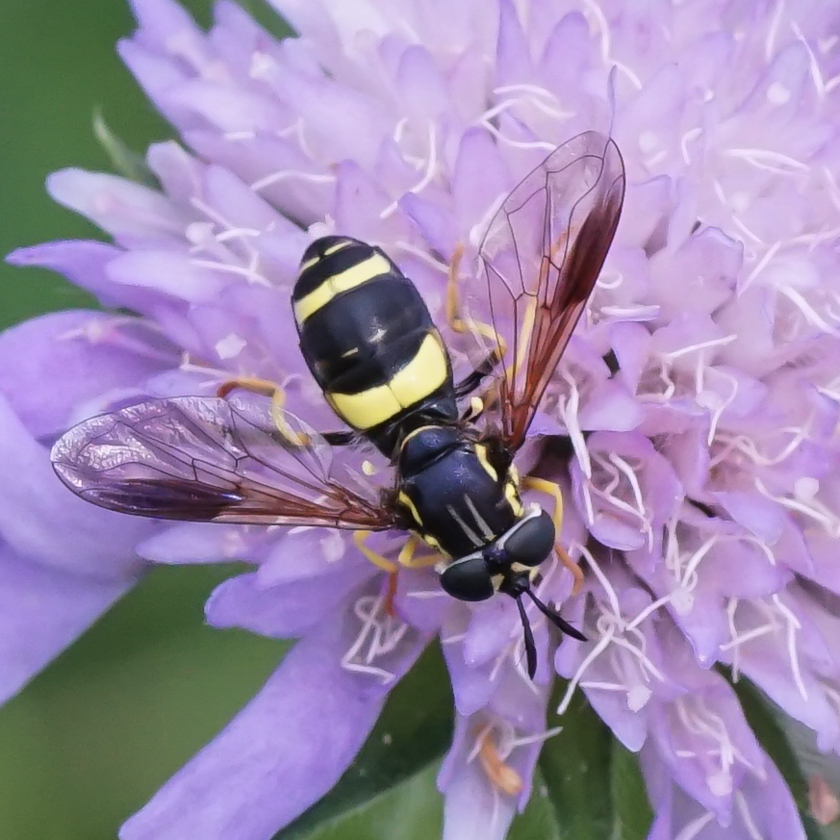
Paul writes: I gave this name to the hoverfly because it hasn’t got a common English name and it’s my favourite. The Latin name is Chrysotoxum bicinctum, which also has a nice ring to it.
Why is it perfect? It’s a nice size, a wing length of up to 10mm and a chunky body so it is easy to see without any binoculars or camera. The abdomen and thorax are beautifully marked even the scutellum can have a nice little yellow line along it, it’s got a lovely bold wing cloud and the black antennae stand out well. To cap it all the legs are lemon yellow. If it comes to rest it always lands with wings open, so you can see it in all its glory. It’s widespread throughout Great Britain, quite common in England and Wales but rarer in Scotland. However it isn’t so common that I see it all the time, but I know it could always turn up, which gives an extra thrill when it does. I’ve found it on my home patch which is an added point in its favour. It’s a summer hoverfly, occurring June, July and August so it’s usually a nice warm day when I see one. I imagine birders have similar favourite birds.
It’s best seen when it lands on a flower, like this one. It can be annoying when you catch a fleeting glimpse then it disappears into the undergrowth. Again a bit like birdwatching. Hedges and woodland rides with plenty of flowers are the best places. I found this one along a footpath near Goodmanham in East Yorkshire.
[registration_form]
Cracking photograph of a beautiful insect Paul!
yes a very nice photograph of a rather nice hoverfly, somewhat better than my own.